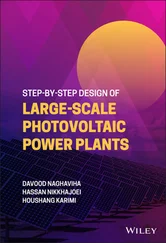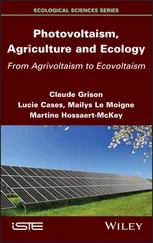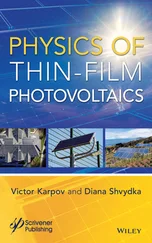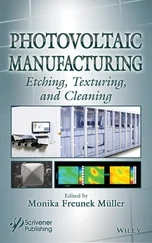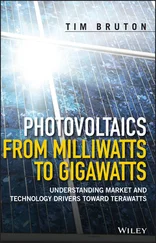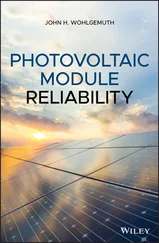Kinetic energy can be found in many places in indoor environments, often in the form of vibrating objects or motion from humans and machines. Besides which, there is often flow from both natural and technical sources, such as air or liquid flow streams within buildings, and from air conditioning plants. Amongst the most classic electric converters using kinetic energy as incoming energy are turbines, and piezoelectric generators in forms of sheets.
Kinetic converters transfer oscillations to a mass. Its movements relative to the supporting structures are coupled back under use of the piezoelectric, inductive or capacitive effect onto an electric system. There are various geometries and designs of converters. Reviews, modeling and research
work include the work of Mitcheson et al. , Roundy et al. or Safaei et al. [11–14]. Kinetic converters are already available on a commercial scale, with examples being Kinetron or ReVibe [15, 16]. These converters mostly cover industrial applications, including rail and helicopter flight assistance.
The following subsections introduce simple general models and available power densities for some of the indoor applications.
2.2.1 Oscillating Solid Objects
Most kinetic converters for vibrations of solid objects are designed for resonance, which means they achieve their maximum electric power at a certain frequency f for an oscillating mass m . The maximum power P maxcan be approximated following Roundy et al. [17]
 (2.1)
(2.1)
where ζ edenotes the electric damping, ζ mthe mechanic damping of the system. For a first approximation, the damping can be modeled to be ζ m= ζ e= 0.015 [17]. In real applications, the modeling of the damping is complex. The total damping ζ follows from ζ m= ζ e, with the damping coefficient d = ζ 2ω f m , where ω f = 2πf. a is the acceleration of the vibration. The oscillating mass m is damped electrically and mechanically ( d ). The resonance frequency depends on the feather constant k , where
 (2.2)
(2.2)
Figure 2.1 depicts a schematic of the model.
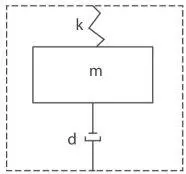
Figure 2.1Schematic of the basic model of a kinetic energy converter with an oscillating mass m , a feather constant k , and a damping coefficient d .
Following Eq. 2.2, both maximizing the mass m and minimizing the damping d are required for an optimization of the electric power yield. This is the reason why many converters of this type are very heavy. From the models, it also follows that for a constant amplitude, the electric yield increases with decreasing frequencies.
The acceleration of the human lower leg has been measured to be 10 m/s 2[18], where the frequency f of a human walking is around 2 Hz. For a mass m = 0,2 kg, and ζ m=ζ e= 0.015 an electric power of 6.64W could be harvested. Decreasing the mass to a more comfortable m = 0.01 kg yields 331 mW. This would already be enough to power small transceivers with low frequencies of use, such as for paging applications in hospitals. As outlined in the introduction of this book by Joe Paradiso, those applications are more of research interest due to their low comfort for the user.
Exemplary demonstrated and commercial systems are outlined in the following sections.
EnOcean uses kinetic converters in order to power their batteryless radio switches [19]. Kinetron offers weight, rotational and linear based converters with a broad application range including watches, water industry, sanitary applications and similar applications [15].
The PowerWalk system by Bionic Power aims at avoiding soldiers having to carry batteries on their mission by using kinetic converters, with a targeted harvest of 10–12 W [20, 21]. Future applications are aimed at forestry, mining and consumers.
Fu et al. demonstrated the use of airflows in micro turbine implemented in a shoe with a power of 6 mW [22]. Many researchers demonstrated the use of piezoelectric converters. A review has been provided by Sun et al. [23].
The commercially available converters for higher frequencies obtain their maximum power at their resonance frequencies, usually 50–60 Hz, and 100–120 Hz, respectively. The bandwidth typically ranges between 1–2 Hz. It follows that the stability of the excitation frequency is their critical parameter. An approach is to order generators that are tuned to application frequencies.
ReVibe Energy sells converters for frequencies from 20–200 Hz with power output from 500 mW to a few W [16]. Figure 2.2 depicts an exemplary generator with equipment from ReVibe Energy.

Figure 2.2ReVibe Energy kinetic converter. (Photo reproduced by permission of ReVibe Energy, 2019).
Non-resonant vibrational harvesters have been a research topic since the beginning of micro energy harvesting. One approach is to tune the electronics [24], the other is to adjust the springs and the length of the resonating mass [25]. Nanoscale generators for implementation in clothes, for example, have been developed by the Georgia Institute of Technology with a corresponding power density of 10 mW/cm 2[26].
Piezo generators and engineering services for customized generators are offered by different companies, such as Piezo.com [27]. Piezoelectric generators mounted on the wings of beetles yielded 11.5 and 7.5 µW during flight in prototypes from the University of Michigan [28]. The recent state-of-the-art in piezoelectric harvesting has been published by Safaei and coworkers [29].
As in most energy harvesting generators, characterization standards with reproducible test conditions are missing, including test temperature and test frequencies. However, regarding their industrial stage, kinetic converters have achieved a mature state.
2.2.1.3 Flow of Gas and Fluids
The theoretical limit of usable power P maxof a gas flow from an electric turbine is defined by the conversion coefficient c Pfollowing the Betz limit [30]
(2.3) 
where A denotes the flow area, ρ the density of theflow medium and v its speed. c pis defined by the ratio of the flow velocity v 1before the rotor of the turbine to the flow velocity v 2after the rotor
(2.4) 
with c p(x) defined as
(2.5) 
Читать дальше

 (2.1)
(2.1) (2.2)
(2.2)








